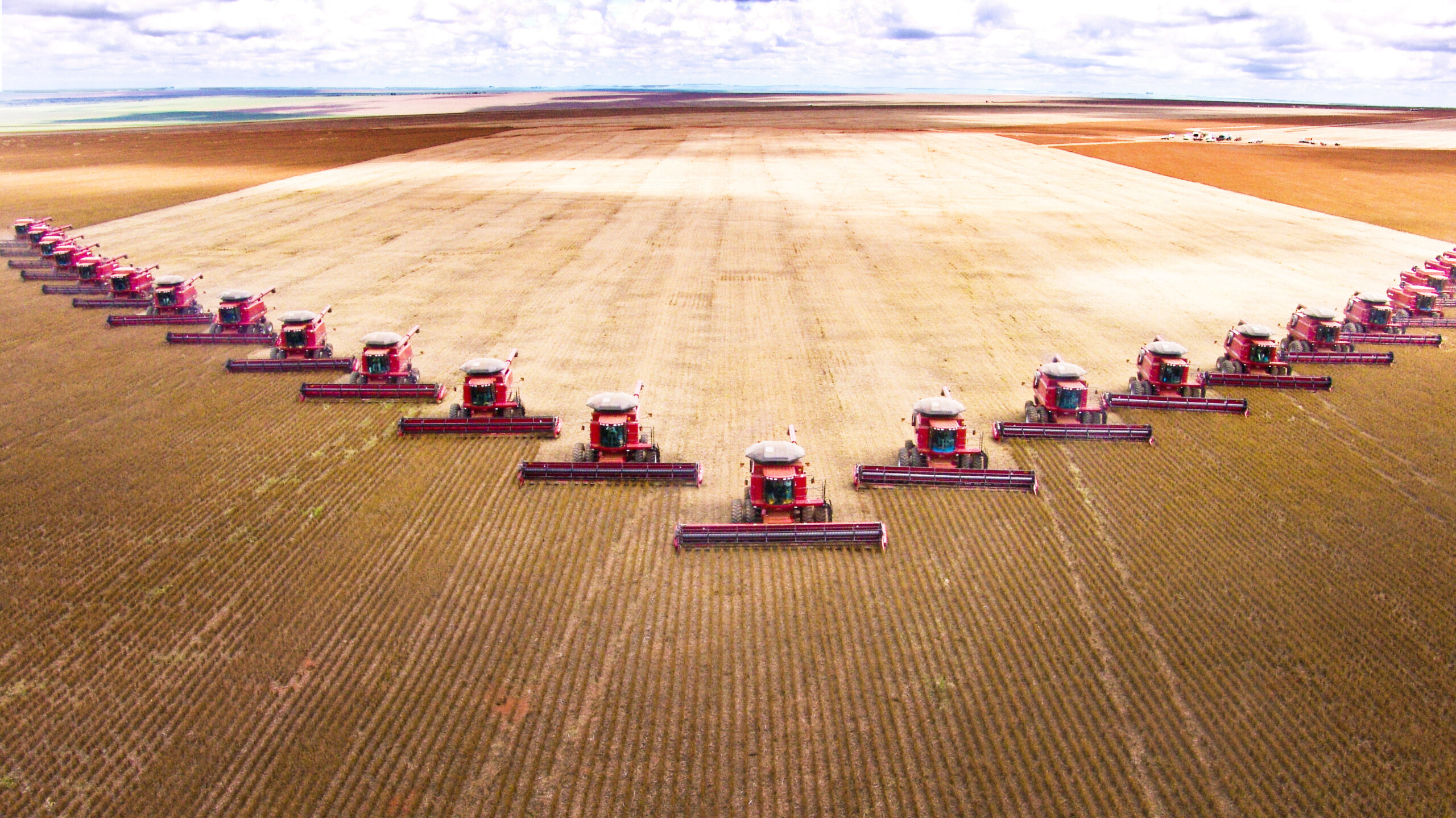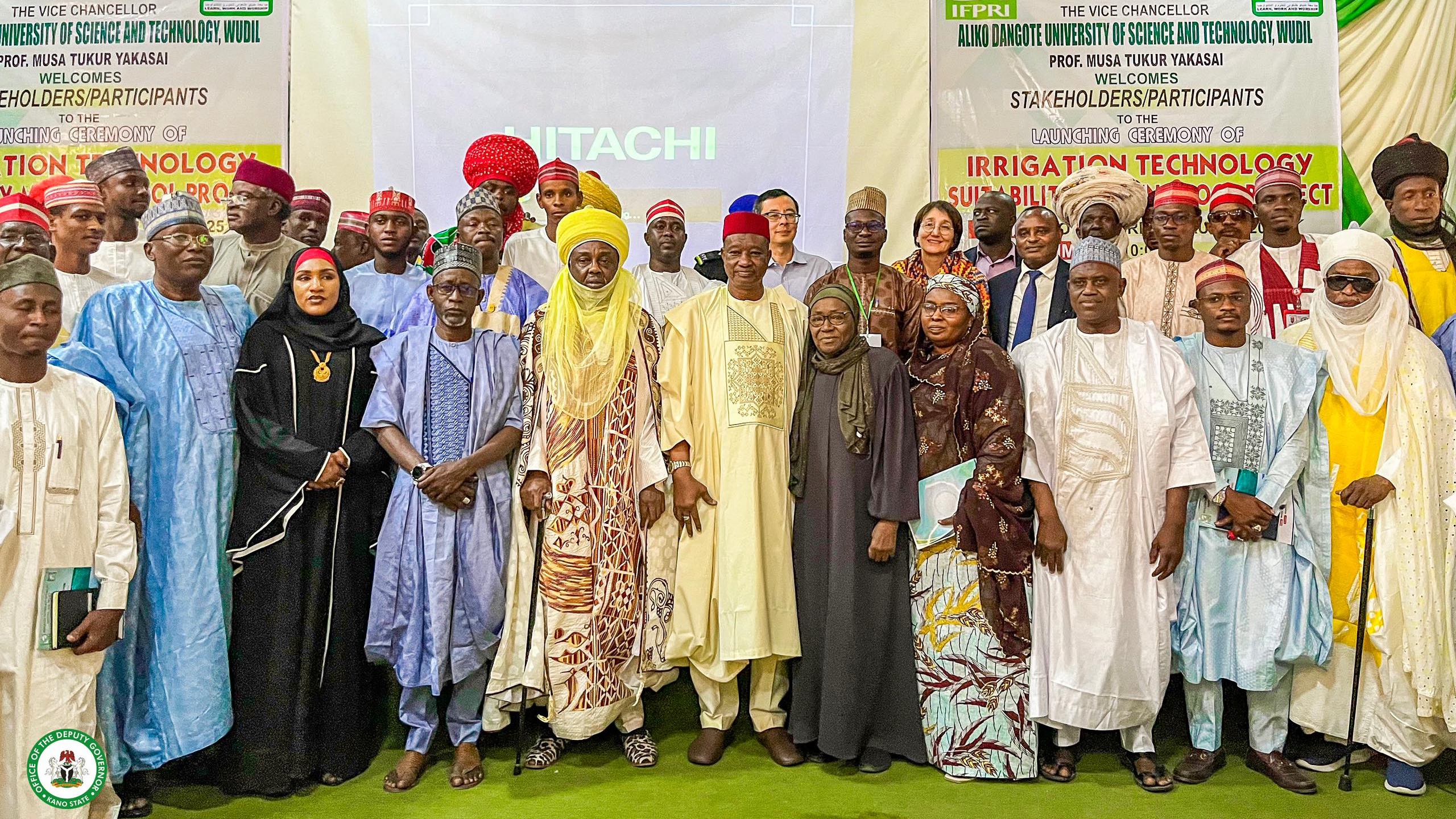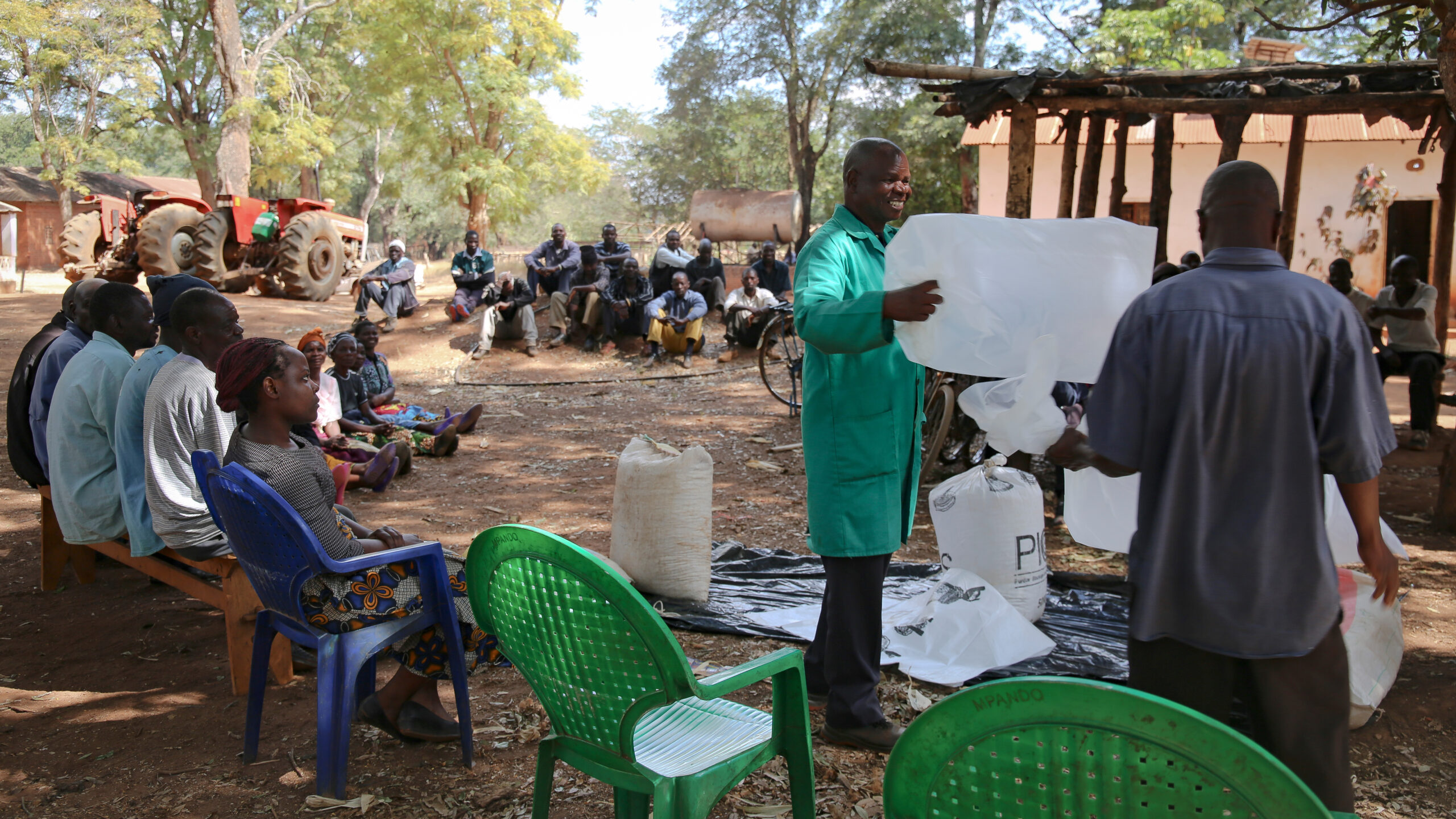Nutrition has been a development priority for a decade. Many countries have strengthened nutrition policies and programs with some measurable success. Derek Headey and Marie Ruel look at available evidence to show that nutrition progress will be threatened by the COVID-19 crisis, particularly if it persists. To mitigate adverse nutrition impacts, they outline multisectoral nutrition actions that can protect the most vulnerable, including mothers and children. —John McDermott, series co-editor and Director, CGIAR Research Program on Agriculture for Nutrition and Health (A4NH).
The COVID-19 pandemic has all the makings of a perfect storm for global malnutrition. The crisis will damage the nutritional status of vulnerable groups through multiple mechanisms. We can expect a dangerous decline in dietary quality in low- and middle-income countries (LMICs) stemming from the income losses related to government-mandated shutdowns and de-globalization, as well as from the freezing of food transfer schemes such as school feeding programs and the breakdown of food markets due to both demand shocks and supply constraints. But malnutrition will also increase due to healthcare failures, as already strained healthcare systems are forced to divert resources from a range of nutritionally important functions – including antenatal care, micronutrient supplementation, and prevention and treatment of childhood diarrhea, infections, and acute malnutrition—toward combating COVID-19.
Based on evidence from previous crises and some limited evidence from the current pandemic, we outline here what to expect and how to protect the most vulnerable, especially women and children, from the effects of this nutritional crisis. We also emphasize the critical need for high-frequency surveillance of vulnerable populations (e.g., through phone surveys) and close coordination across sectors, including health, agriculture, education, water and sanitation, social protection, and commerce and trade. Just as in normal times, malnutrition remains a multidimensional problem during times of crisis and therefore requires multisectoral solutions.
COVID-19 may lead to drastic reductions in dietary quality
The COVID-19 economic crisis will affect diets primarily through declining demand for vegetables, fruits, and animal-sourced foods, which are the main sources of essential micronutrients in diets. But these demand shocks will also break down the value chains that supply such highly perishable foods, further exacerbating the shift to monotonous, nutrient-poor diets.
Income effects are likely to be dramatic for poor households in LMICs because of widespread unemployment resulting from COVID-19 mitigation measures. The poor will respond by purchasing the cheapest calories they can find to feed their families. We know from previous IFPRI research that in poor countries calories from nutrient-rich, non-staple foods like eggs, fruits, and vegetables are often as much as 10 times more expensive than calories from rice, maize, wheat, or cassava. In the face of drastic declines in income, vulnerable households will quickly give up nutrient-rich foods in order to preserve their caloric intake.
This happened during the 1998 Indonesian financial crisis, when real wages fell by 33% between August 1997 and August 1998 due to rising unemployment and a food price crisis. Strikingly, even as rice prices skyrocketed by almost 200%, rice consumption continued to rise during this period. A nutritional surveillance study in rural Java that collected 14 rounds of data during 1995–1997 also found dramatic declines in egg, meat, and vegetable consumption. Not surprisingly, child anemia, sometimes caused by iron and other micronutrient deficiencies, rose sharply from a baseline of 52% to 68% at the peak of the crisis, and children’s mean weight-for-height declined by over one-third of a standard deviation.
The COVID-19 economic crisis could also affect nutrition through disruptions to supply chains for nutrient-rich foods. Most nutrient-rich foods are highly perishable, resulting in fragile supply chains. A breakdown in any part of the supply chain – from farms to traders, transporters, and processors to retailers – can break the whole chain. IFPRI has already collected evidence of significant disruptions to livestock production in China and fruits and vegetables in Ethiopia, while Indian media are reporting a full-blown crisis in dairy marketing, which is particularly troubling in a country where milk and milk products are key sources of essential nutrients for young children. Public food distribution programs are gearing up in several countries to mitigate these types of problems, but such programs deliver nonperishable staples, oils, and pulses, potentially compounding the tendency toward poor-quality diets.
In addition to the severe deterioration in household diets, there are major additional nutritional risks for mothers and young children. Agencies like UNICEF are worried about disruptions to imports of crucial nutritional products, including micronutrient supplements and micronutrient-fortified products used to prevent and treat micronutrient deficiencies or severe acute malnutrition. Anecdotal evidence from Asia also suggests that women are concerned about passing the coronavirus to their infants through breast milk, which could result in switching to breast milk substitutes that increase risks of infection and malnutrition in areas with poor water quality. And globally, breastfeeding promotion and nutrition counseling usually provided by the health sector will be severely limited due to restrictions on mobility, social distancing requirements, and overburdened healthcare systems.
COVID-19 threatens maternal and child health, directly and indirectly
Pregnant women and mothers with young children are obviously vulnerable to COVID-19, and especially so if they have other underlying health conditions. But the indirect effects on healthcare systems will likely have far greater consequences for maternal and child health. In principle, lockdown protocols in most countries do not prohibit health-related travel, but healthcare providers and their clients will be less willing to travel for non-emergency check-ups or preventive care (such as immunization, nutrition counselling, micronutrient supplement distribution), and many maternal and child healthcare providers have already been reassigned to COVID-19 responsibilities.
The erosion of resources for maternal and child healthcare could easily manifest in invisible tragedy, characterized by drastic declines in antenatal, neonatal, and essential maternal, infant and child healthcare services. Some of the most direct risks include breakdowns in supply and/or distribution of antenatal iron folic acid or multiple micronutrients; child vitamin A supplementation; distribution of oral rehydration salts and zinc for diarrhea and therapeutic food for home treatment of acute malnutrition; and safe in-person treatment consultations.
More indirect, yet equally severe, is the risk that diversion of heathcare resources toward combating COVID-19 will jeopardize regular but life-saving efforts to prevent and treat malaria, diarrhea, and other infectious and tropical diseases. In much of Asia and Africa, the inevitable scaling back of these efforts will coincide with the monsoon rains—a time when, even in normal years, the incidence of tropical infectious diseases and of acute malnutrition rises steeply. In 2020, the perfect storm of eroded basic healthcare, chronic lack of access to safe water, sanitation, and hygiene (WASH), declining dietary quality, and heightened seasonal risk of infectious disease means that many millions of children in Asia and Africa will be in danger of severe, life-threatening disease and malnutrition. Poor nutrition, in turn, weakens the immune system and can jeopardize the body’s ability to fight a COVID-19 infection.
How can we protect vulnerable groups?
Policy makers and researchers alike are operating in a unique state of uncertainty, and those working on nutrition may struggle to get their voices heard in the fog of this war against COVID-19. It is therefore critical to strengthen and broaden multisectoral nutrition coalitions to ensure that actors in different sectors work as effectively as possible to prevent a full-blown nutritional crisis. All over the world, COVID-19 response committees have been formed to address the crisis, but in many instances, we fear, those championing food and nutrition security are being sidelined. Yet it is now more critical than ever that multisectoral nutrition groups advocate and support key actions to protect nutritionally vulnerable groups (with many of these actions also contributing to poverty reduction). These include:
- Keep agrifood systems functioning. Let farmers farm, traders trade, input dealers deal, and sellers sell, even if they are informal. Implement social distancing and improve hygiene measures along the value chain, but keep domestic and international food markets working.
- Facilitate food system innovations. Given that social distancing and mobility restrictions may be in place for many months, governments, development partners, and microfinance institutions should search for ways to stimulate innovative and safe food delivery systems, for example, especially those that create jobs.
- Support enhanced homestead food production to increase access to nutrient-rich vegetables, fruits, and eggs and improve diet quality. These programs are consistent with social distancing, can use surplus household labor, including women, and will increase consumption of nutrient-rich foods.
- Find innovative ways to stimulate demand for nutrient-rich foods. National leaders and national media must urge their populations to keep consuming healthy diets. Mobile phone messaging could be used to stimulate demand for protective nutrient-rich foods and to encourage appropriate infant and young child feeding practices, including optimal breastfeeding and diet diversity practices.
- Use social safety net programs to improve dietary quality, not just quantity. Food transfers are often focused on staples, and where available, should consider biofortified (micronutrient-rich) crops. Cash transfers or vouchers schemes linked to innovative food delivery systems should also be considered to keep the economy going and stimulate demand for fruits and vegetables, dairy, and other nutrient-rich foods. School feeding programs should also adopt new modalities to safely distribute food during school closures.
- Prevent the collapse of basic maternal and child health services. The medical profession is facing the most challenging crisis of the past century. Still it must find ways to maintain basic preventive and curative healthcare services, especially for mothers and young children, whether through remote consultations and nutrition counseling (using mobile messaging or radio) or COVID-19–safe home visits and delivery of essential medications and supplements. Key to meeting this challenge is increasing access to protective equipment for all healthcare workers.
- Invest in WASH, urgently. WASH programs are a win-win for preventing contagion of COVID-19 and other infectious diseases that affect maternal and child health and nutrition. Many LMICs have increased access to handwashing stations in communal places. Public announcements and mobile messaging can raise awareness and nudge individuals into more hygienic routines.
- Ramp up support to community-based management of acute malnutrition. With the expected rises in acute malnutrition, it will be important to boost (safe) community-level screening and referral of children with acute malnutrition, maintain appropriate stocks of life-saving supplements, and ensure appropriate staffing and availability of protective equipment. Regular monitoring and surveillance will also be needed to assess the emergence of acute malnutrition among newly vulnerable populations.
- Protect women and children. Economic stress and social distancing will increase the risk of domestic violence and psychosocial stress. Social protection and other relief programs need to prioritize women and children and explore novel ways to support individuals and communities in the context of prolonged social distancing.
- Set up or scale up food and nutrition surveillance systems. These systems help in identifying the scope and scale of nutritional crises, especially fast-moving crises. Innovations in phone and web-based surveillance systems offer new tools for timely monitoring of vulnerable populations to improve targeting and program design in a time of unparalleled uncertainty.
Derek Headey is a Senior Research Fellow with IFPRI’s Poverty, Health, and Nutrition Division (PHND); Marie Ruel is Director of PHND. The analysis and opinions expressed in this piece are solely those of the authors.







